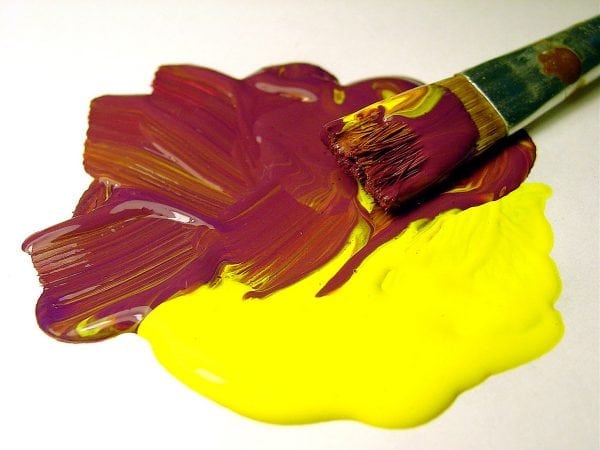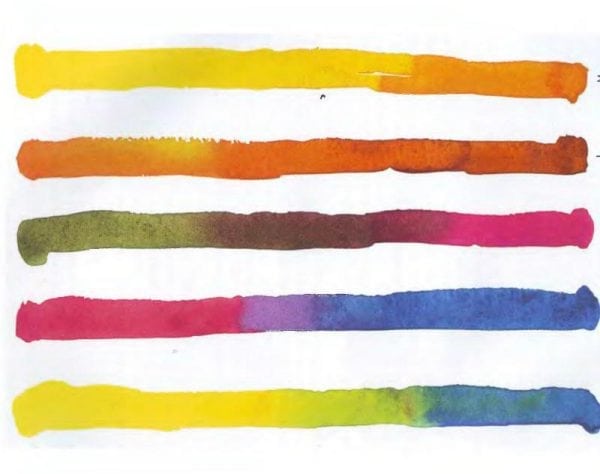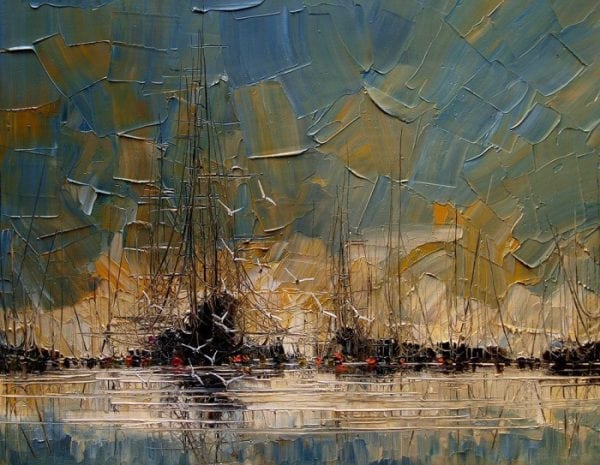It doesn’t matter if oil paints are used to create a painting or simply to design a room, there always comes a moment when you need to get a shade that is not in the palette. To do this, you have to mix colors. For experienced artists or designers, tinting is not difficult, but what should beginners do? How to mix oil paints to get the right color?
- Features of oil bases
- A bit about mixing
- How to mix correctly
- Mechanical mixing
- Color overlay
- Optical illusion
- Features
- How to apply finished dye
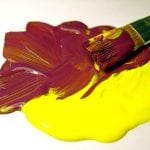
Features of oil bases
Compared to watercolors, gouache or acrylic, the oil base is more fluid. To create a uniform color, thorough mixing is necessary. At the same time, this feature of paints allows you to get additional artistic effects:
- With full mixing, an even color is obtained, suitable for both painting and painting surfaces.
- With partial mixing, darker or lighter particles of tinting will be visible at the base, which, when drawn, look like streaks, giving the picture originality and unusualness.
Given this peculiarity of the dye, you can create an original room decor using partial mixing.
to contents ↑A bit about mixing
The basic color palette, although extensive, has not very many complementary shades. To get the necessary color tone, you need mix two or more basic colors. How to mix oil paints to get the desired result? To do this, use the table where the color palette of the necessary colors is indicated, and how to get them by combining the right tones. Such tables are used not only by beginners, but also by experienced designers. Tables are made very conveniently, they indicate:
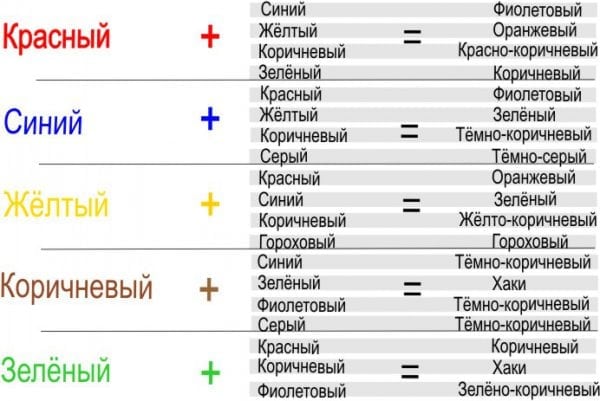
- The name of the color to be obtained, and what color scheme is needed for tinting. For example, you need a golden hue. We are looking for this name in the table, and next to the desired color will be indicated the color scheme necessary for mixing. In the case of gold, to obtain it, it is necessary to add a drop of brown or red to the yellow.
- The combination of brilliance. For example, I want to know what shine is obtained when combining matte and glossy paints of different colors. As a rule, if you add a drop of glossy paint to matte, then its calm matte gloss will not be disturbed, but if you do the opposite, then the glossy color will slightly dull the matte gloss. A mixture of matte and glossy gloss is often used by room designers to emphasize the transition of halftones.
to contents ↑Having figured out how to use the tables, you can try to create your own color palette and use it to create a designer or art masterpiece.
How to mix correctly
If the desired color scheme is not used to create an artistic picture, tinting can be done in two ways:
- adding a color tint to the oil base (such a tint is sold in all construction stores and is suitable for dyes on any basis);
- mixing oil bases in various ways.
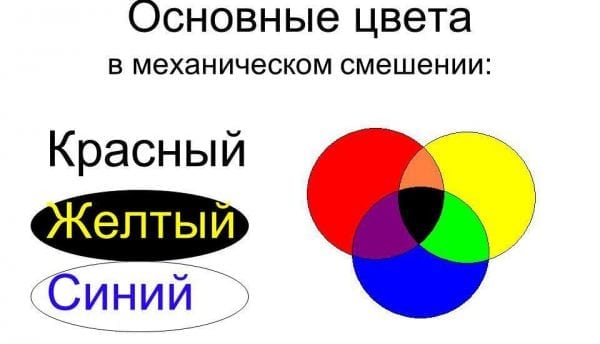
In painting, mixing occurs using the following techniques.
to contents ↑Mechanical mixing
The result is achieved by mixing two or more bases of a different color. The main thing with this technique is thorough mixing to achieve complete uniformity of the dye.
But you should not rely only on the table data (a slight deviation of the initial tone from the specified one can give a completely different result), it is better to try to develop your own color perception, which allows you to determine the ratio “by eye”, by trial and error. Just try the resulting mixing result not on the main picture, but on any unnecessary surface.
to contents ↑Color overlay
This method requires some skill and developed color perception. For beginners, before embarking on decorating, it is advisable to practice on unnecessary surfaces. The method consists in applying a new tone on top of a slightly dried smear, and there is a partial mixing of the color structures on the basis.
Optical illusion
This method is suitable only for masters when, by skillfully selected color matching and color difference of dyes, an illusion of a completely different tone is created.
Features
All three methods using the same color palette allow you to get different shades. The mechanical mixing palette is the same as the table. The color scheme obtained by blending and partial mixing can give interesting tones, the names of which are known only to professional artists. But for successful decoration it is not necessary to know the names, it is enough to create a beautiful and unusual effect.
With spatial mixing, the result does not necessarily depend on color. You can get a dark green hue if any glossy tone is applied next to the matte green. For beginners, these optical games in the drawing will not work out right away, but if you wish, with a little practice, you can get amazing results using the color palette and the brightness difference.
to contents ↑Also, to create optical effects, a glazing method is used, when a translucent, glaze layer is applied on top of the dye’s dense structure after drying and one shade shines through the other.
How to apply finished dye
If you want to seriously engage in design work or start painting, you can master all the mixing techniques. But for household decoration, full and incomplete mixing is enough. Work with oil as follows:
- Prepare a color on the palette immediately before use.
- Apply strokes with a brush or a special swab (it is difficult to correct mistakes in oil painting).
- Apply the next coat only after the previous one has dried (the exception is the partial mixing method).
- If the color changes, clean the brush with a solvent.
Following these simple rules and taking into account the peculiarities of the oil structure when mixing, even a novice will be able to create a beautiful decor of the room or draw a planned pattern on the wall.

